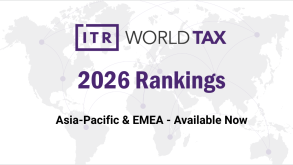The OECD/G20 Inclusive Framework on BEPS (IF) published a report in February 2024, which was updated and finalised in June 2024, providing an optional approach (amount B) that jurisdictions can choose to implement to establish arm’s-length prices for in-scope marketing and distribution transactions for resident distributors.
Amount B has a broad scope and is potentially applicable to a wide variety of such distribution transactions; hence, amount B will meaningfully impact the application of the arm’s-length standard wherever amount B is adopted by countries. The extent of the impact will be influenced by how widely amount B is adopted.
While some jurisdictions are likely to advance with its adoption, others may choose to adopt amount B at a later stage, potentially influenced by the entry into force of the Multilateral Convention to Implement Amount A of Pillar One (MLC).
Although amount B aims to simplify and streamline the application of the arm’s-length principle for in-scope transactions, this article will discuss the uncertainties and challenges in applying the proposed rules in practice. The issues lie in the fine print, and differing interpretations of these issues may lead to compliance challenges, and even controversy. Accordingly, taxpayers should carefully consider the applicability of amount B to their transactions and evaluate how such challenges and controversies may be mitigated or prevented.
Scoping criteria
To identify in-scope transactions, amount B establishes a clear set of qualifying and scoping criteria, which are both qualitative and quantitative in nature.
The qualitative criteria broadly require that, based on a proper delineation of the transaction – ideally, documented for the purpose of transfer pricing (TP) compliance by taxpayers – the distributor should exhibit economically relevant characteristics akin to a baseline distributor. The qualitative scoping criteria implies that the distributor should not make contributions to any unique and valuable intangibles and should not assume economically significant risks under the distribution transaction, and that the qualifying (in-scope) transaction can be reliably priced using a one-sided method where an internal comparable uncontrolled price is not available.
The quantitative criterion examines the ratio of operating expenses (OE) to sales, to determine the applicability of amount B for an in-scope transaction.
The scoping criteria aim to simplify the evaluation of key aspects of delineating the transaction for the purposes of evaluating whether the amount B pricing matrix may be properly applied to determine the arm’s-length pricing for the transaction. However, challenges may lie in the practical application of these principles. For example, applying the criteria requires judgement calls to be made in the choice of an appropriate TP method, the proper measurement of OE and revenues, and drawing distinctions between different activities.
In the case of mixed-activity entities – those engaged in distribution and non-distribution activities (such as retail activities, non-distribution activities, or bundled activities linked to the distribution activity) – these challenges become more complicated. Here, the taxpayer would need to segment the in-scope distribution transaction in accordance with paragraphs 3.9–3.12 of the OECD Transfer Pricing Guidelines for Multinational Enterprises and Tax Administrations (TPG) for the transaction to be in scope. While taxpayers often do prepare segmented financials, these may be subject to greater scrutiny when assessing the validity of the application of the scoping criteria.
Further challenges may also arise in cases of commissionaires or sales agents; herein, the taxpayer would need to measure revenues, which requires information from the tested party as well as the counterparty with respect to the in-scope transaction, and such information may not be readily available.
Pricing
The amount B pricing matrix provides a useful simplification and framework for assessing returns for comparable distribution transactions. However, like the application of the scoping criteria, applying the pricing matrix presents practical challenges and may give rise to certain forms of disputes. For example, in assessing the arm’s-length nature of ordinary distribution transactions, the information required to construct or test the returns is limited to profit and loss (P&L) account information.
In contrast, amount B requires balance sheet (BS) information to calculate net operating assets. This involves making evaluative decisions on the appropriate direct and indirect allocation of operating assets (OA) to the controlled transaction, particularly in the case of mixed-activity entities, adding to the complexity. Without properly calibrated taxpayer accounting systems, this becomes a manual exercise for the taxpayer and is subject to scrutiny during tax enquiries or audits.
Additionally, due to the nature of the activities undertaken by the commissionaires or sales agents, their risk assumptions and use of OA with respect to the in-scope transaction would invariably differ from that of a distributor. However, the amount B pricing matrix only considers OA and OE, and does not differentiate between the risks assumed by a distributor vis-à-vis a commissionaire or sales agent.
Counterparty adjustment
In reality, it is quite common for distribution entities to purchase goods from multiple related parties. As the adoption of amount B is optional for jurisdictions, it may lead to more complications wherein a tested party engages in in-scope transactions with more than one counterparty.
For example, let us say a tested party based in jurisdiction X has adopted amount B. The tested party enters into in-scope transactions with two group entities located in jurisdictions Y and Z. Jurisdiction Y also adopts amount B, whereas jurisdiction Z does not adopt amount B. During a tax audit, an adjustment is made to the in-scope transaction that results in double taxation of the profits for transactions with both counterparties. To address the issue, a mutual agreement procedure (MAP) would have to be initiated between jurisdictions X and Y, as well as between jurisdictions X and Z.
Some potential scenarios for this dispute resolution under a MAP are outlined below.
Jurisdiction X is a covered jurisdiction under amount B
MAP with jurisdiction Y
As jurisdictions X and Y have adopted amount B, then the competent authorities (CAs) of both jurisdictions will rely on the amount B approach to resolve the issue of double taxation.
MAP with jurisdiction Z
The amount B final report mentioned a political commitment to support low-capacity jurisdictions (LCJs). According to this commitment, if an adjustment is made in an LCJ for an in-scope transaction using the amount B approach, the counterparty CA may consider this adjustment under a MAP, even if the counterparty jurisdiction has not adopted amount B. The definition and list of LCJs was to be provided by the OECD later. In June 2024, a statement was released that replaced the LCJ with a ‘neutral’ term, “covered jurisdiction”. This statement also provided a list of 66 covered jurisdictions under the IF political commitment for a period of five years, from 2025 to 2029.
As the tested party is based in jurisdiction X, a covered jurisdiction, the CA of jurisdiction Z would consider the outcome determined under the amount B approach. Subject to its domestic legislation and administrative practices, it would take all reasonable steps to relieve potential double taxation where a bilateral tax treaty is in effect with jurisdiction X.
Jurisdiction X is not a covered jurisdiction under amount B
MAP with jurisdiction Y
There would be no change, it would be the same as the scenario described above.
MAP with jurisdiction Z
Since the tested party based in jurisdiction X is not in a covered jurisdiction for amount B purposes, the CA of jurisdiction Z would not consider the amount B approach. Instead, the arm’s-length price under a MAP would have to be determined based on the normal TP rules and regulations followed by the jurisdictions.
This would require the tested party to determine and implement different pricing policies for the same in-scope transactions with counterparties in jurisdictions Y and Z. This may also lead to complications regarding customs rules and regulations. Additionally, the tested party would also require segmented P&L and BS data for each counterparty.
Application challenges
Certain aspects of defining the pricing matrix derived through the development of the global data set are in the form of a ‘safe harbour’ return for in-scope transactions. However, unlike a typical safe harbour, which is optional, the application of amount B may also be mandated. For example, similar to safe harbours, the OECD has rejected persistent loss-making entities from its data set, resulting in a pricing matrix with only positive returns on sales (RoS).
Furthermore, the adjustment for qualifying jurisdictions under the data availability mechanism would only adjust the RoS upwards, as determined by the amount B pricing matrix. The only potential downward adjustment to the amount B RoS is through the OE cross check; i.e., if the tested party’s return on OE (or, indirectly, the Berry ratio) exceeds the OE cap rates. Hence, if the Berry ratio of a tested party is above the OE cap rates, the RoS would adjust downwards. Similarly, the collar rate would provide an upward adjustment on the RoS. Given the structure of amount B calculations, only in limited cases may the RoS as per amount B potentially lead to a loss scenario, mathematically.
Interestingly, the OECD has suggested that when amount B is elective for the taxpayer, the taxpayers should give consent to apply it for a minimum of three years. We can assume that this suggestion has been made to bring consistency and to prevent taxpayers from selecting the more beneficial approach in any given year. However, this overlooks the fact that in business, losses can occur.
Defending the arm’s-length nature of pricing and returns in the case of a loss-making entity is a common area of TP controversy. The OECD TPG state that “simple or low risk functions in particular are not expected to generate losses for a long period of time” (paragraph 3.64). Referring to paragraph 3.64, in the Guidance on the transfer pricing implications of the COVID-19 pandemic, the OECD mentioned that this leaves open the possibility that simple or low-risk functions may incur losses in the short run (paragraph 39). Hence, when the taxpayer is required to elect amount B for at least three years, the OECD should clarify that in circumstances where tested-party margins fluctuate due to business reasons, tax administrators should not look at each year in isolation but, rather, take a longer-term view based on facts and circumstances.
In addition, to mitigate any potential misuse of the amount B pricing matrix, countries should ensure that in cases where the amount B approach is not used, either by the taxpayer or the jurisdiction itself, the pricing matrix should not become a ‘floor price’ for tax administrators during TP audits. Despite comments in this regard in the amount B report, this should be evaluated in practice and clearly articulated to tax auditors when they seek to apply the guidance in practice.
The pillar one MLC
While negotiations to finalise the pillar one MLC are ongoing, it is a matter of record that amount A and amount B are politically interdependent to many countries.
Some regard amount B as an essential ingredient to the overall pillar one package and require its consistent adoption by countries as a trade-off for ratifying the pillar one MLC.
Others regard the design of amount B as inappropriate to their countries and consequently seek additional features to be incorporated into the design of amount B – at a minimum – as a condition for their consent to adopt it. These trade-offs are politically challenging but are essential for achieving broader adoption of amount B and moving beyond a purely elective approach for countries to adopt.
Key takeaways on amount B
The impact of amount B will be dependent on its adoption by jurisdictions: the greater the number of jurisdictions, the more significant the impact. It may provide some improvement to tax certainty worldwide, particularly in cases in which a jurisdiction implementing it is also a covered jurisdiction under a political commitment. However, it could also create new sources of controversy, especially around making the judgement calls needed to accurately calculate returns based on the amount B pricing matrix.
Multinational enterprise groups with in-scope distribution transactions need to comprehensively prepare for the introduction of the rules. They should evaluate how amount B may affect the pricing of in-scope transactions, obtain and organise the necessary data to comply with the rules, and understand any risks associated with the introduction of the rules.
Deloitte refers to one or more of Deloitte Touche Tohmatsu Limited (DTTL), its global network of member firms, and their related entities (collectively, the “Deloitte organization”). DTTL (also referred to as “Deloitte Global”) and each of its member firms and related entities are legally separate and independent entities, which cannot obligate or bind each other in respect of third parties. DTTL and each DTTL member firm and related entity is liable only for its own acts and omissions, and not those of each other. DTTL does not provide services to clients. Please see www.deloitte.com/about to learn more.
This communication contains general information only, and none of Deloitte Touche Tohmatsu Limited (“DTTL”), its global network of member firms or their related entities (collectively, the “Deloitte organization”) is, by means of this communication, rendering professional advice or services. Before making any decision or taking any action that may affect your finances or your business, you should consult a qualified professional adviser.
No representations, warranties or undertakings (express or implied) are given as to the accuracy or completeness of the information in this communication, and none of DTTL, its member firms, related entities, employees or agents shall be liable or responsible for any loss or damage whatsoever arising directly or indirectly in connection with any person relying on this communication. DTTL and each of its member firms, and their related entities, are legally separate and independent entities.
© 2024. For information, contact Deloitte Global.













